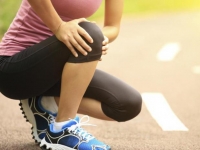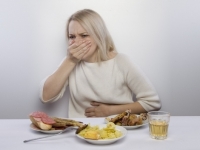Crunches joints: a disease or a feature of the body?
 We recall the important role in the life of a person in joints when problems arise with them. Many questions and concerns cause a crunch in the joints: what is it, a signal to the body about health problems or just a hint that you need to be more physically active? Crunchy joints are not always a symptom of the disease, often the causes are less dramatic. But in order to be calm, it is important to understand why the joints make crispy sounds at all, and whether it is worth running to the doctor in your case.
We recall the important role in the life of a person in joints when problems arise with them. Many questions and concerns cause a crunch in the joints: what is it, a signal to the body about health problems or just a hint that you need to be more physically active? Crunchy joints are not always a symptom of the disease, often the causes are less dramatic. But in order to be calm, it is important to understand why the joints make crispy sounds at all, and whether it is worth running to the doctor in your case.
When crispy joints are a feature, not a pathology
Teenagers and young women often complain about crispy joints. In adolescents, with the rapid growth of bone tissue, the ligamentous apparatus lags behind and the joint fluid is produced more slowly. Therefore, for a teenager, a crunch in the joints is a completely normal phenomenon, unless of course there is no pain and swelling. Also often crisp joints are a consequence of genetic predisposition. A certain type of young women, in whom the production of ultra-stretchable collagen is enhanced in the body – from skin protein, which provides structural protection for tissues, organs – and joints, also often complains of crunchy joints.
In addition to the crunch in the joints of these people often develop early varicose veins and appear vascular “mesh” on the legs. We also hear characteristic sounds in the joints when gas bubbles burst in the intraarticular fluid. The joints are crunching due to the abundance of proteins in the intra-articular fluid: either the protein-rich diet or the inflammatory process in the body is to blame. Crunchy joints can also be the result of weak physical activity, or vice versa – excessive physical exertion.
When crunching in joints is a symptom of pathology
If, in addition to crisp joints, there are pains at movement and at rest, swelling or swelling of the tissues around the joint, etc., then this is already a symptom of the disease. So, crunching, soreness, the appearance of “bumps” on the skin in the joints can be signs of gout, calcification or other deposition of articular salts, arthritis, arthrosis, etc. Also, the joint may crackle after injury.
When excessive loads on the joint can develop bursitis, this condition is characterized by inflammation in the articular bag, in which, in addition to painful sensations, there can also be a clicking or crunching in the joint. Also, a crunch in the joints may appear due to age-related changes in the body. And the habit of “crunching” joints when clicking with your fingers leads to permanent injury to the joints and the development of arthrosis.
How to help the joints: prevention of rheumatological diseases
If you are worried about the crunch in the joints, it is better to ascertain the cause of this symptom: the rheumatologist deals with the treatment of the joints and ligaments. It is important to follow the diet – eat protein foods (meat, eggs, milk), but at the same time, do not forget about the balance with other foods – vegetables, fruits, whole grains, etc.
A sedentary lifestyle is harmful to the joints, as is excessive exercise. Injuries and overloads of the joints lead to a violation of the cartilage layer and inflammatory processes, the further development of arthritis and arthrosis. If the work is sedentary, it is important to change the position of the body every 40 minutes: do a little warm-up, twists and turns, and other exercises that involve hip joints, spinal joints (shoulder, neck), etc. However, with the already existing pain, swelling, etc. in the joints, physical exertion should be selected only by a doctor!



